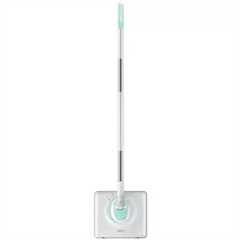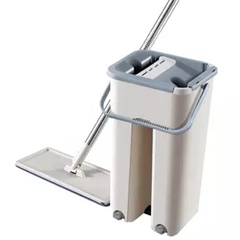Mastering mopping is an essential skill to keep your floors clean and maintain a healthy living environment. Whether you’re new to mopping or just looking to improve your technique, here’s a beginner’s guide to help you achieve spotless floors:
- Gather the right tools and supplies:
- Mop: Choose a mop that suits your floor type. Microfiber mops are generally versatile and effective for most surfaces.
- Bucket: Opt for a sturdy bucket that is large enough to hold enough water for the area you plan to mop.
- Cleaning solution: Use a suitable floor cleaner that is recommended for your specific flooring (e.g., hardwood, tile, laminate).
- Water: Ensure you have access to clean water for rinsing the mop.
- Clear the area: Remove any obstacles, furniture, or debris from the floor to make mopping easier and more effective.
- Sweep or vacuum the floor: Before mopping, sweep or vacuum the floor to eliminate loose dirt, dust, and debris. This prevents the mop from pushing around dirt and causing streaks.
- Dilute the cleaning solution: Follow the instructions on the cleaning solution bottle to prepare the right amount of cleaning solution in the bucket. Diluting it properly prevents leaving behind a residue on your floors.
- Wet the mop: Dip the mop into the cleaning solution and wring out excess water. The mop should be damp, not dripping wet.
- Start mopping: Begin mopping from the farthest corner of the room and work your way towards the exit. This prevents you from stepping on freshly cleaned areas.
- Use proper technique: For most mops, use a figure-eight or an “S” shaped pattern to cover the floor evenly. Apply gentle pressure and avoid using excessive force, especially on delicate flooring like hardwood.
- Pay attention to tough spots: For stubborn stains or sticky spots, let the cleaning solution sit for a few minutes before scrubbing with the mop or using a soft brush to loosen the dirt.
- Rinse the mop frequently: Rinse the mop in clean water regularly to avoid spreading dirt around. Change the cleaning solution as needed if it becomes too dirty.
- Dry the floor: After mopping the entire area, allow the floor to air dry or use a dry mop or clean, dry microfiber cloth to speed up the drying process.
- Clean the mop and bucket: Rinse out the mop thoroughly and allow it to air dry. Empty and rinse the bucket to prevent odors and the growth of bacteria.
- Maintain a regular mopping schedule: Establish a routine for mopping your floors based on your household’s needs. Regular mopping prevents dirt buildup and ensures a consistently clean environment.
Remember, each floor type may have specific care requirements, so always follow the manufacturer’s recommendations for the best results. With practice and consistent effort, you’ll master the art of mopping and maintain sparkling clean floors throughout your home.








